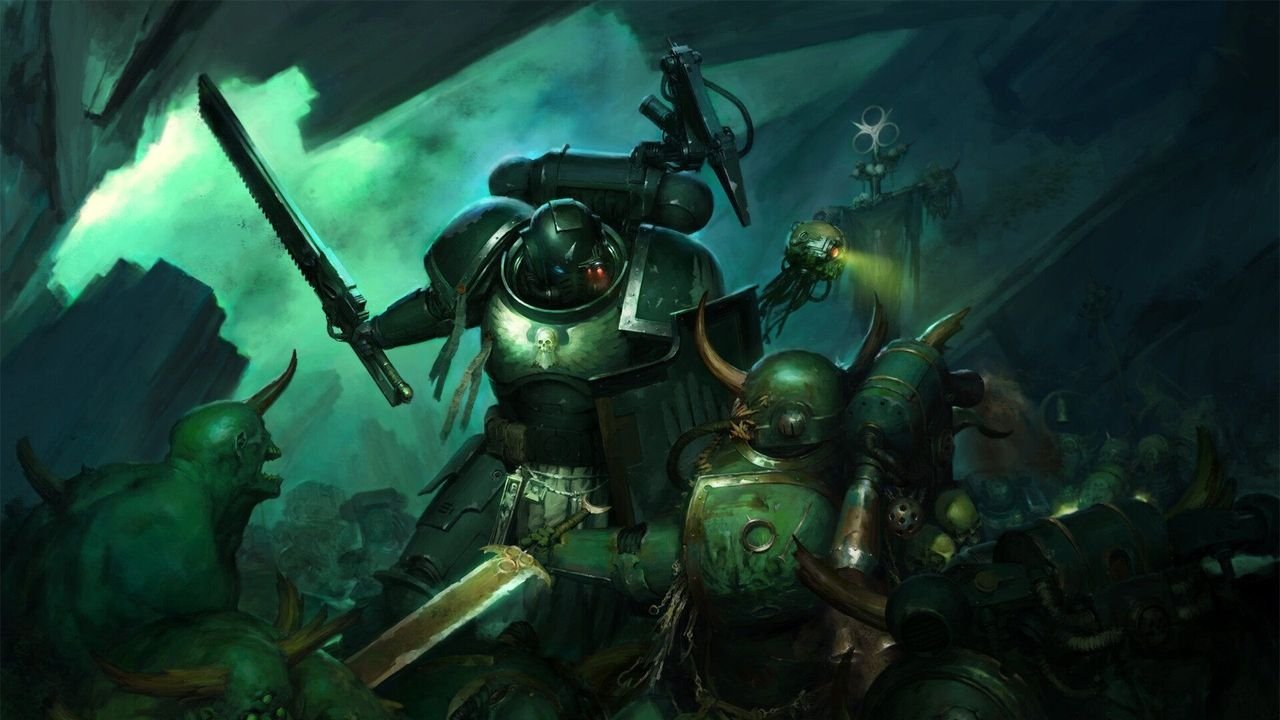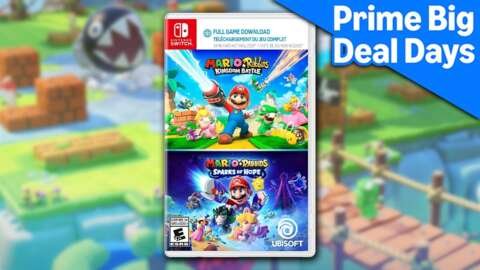Hollywood, Please Release Your Horror Movies in Theaters, Not on Streaming
It isn’t exactly a new observation that the survival of theatrical distribution is in question these days. Between the COVID-19 pandemic and the glut of streaming services, the past few years have seen the discussion around new movie releases often turn into a referendum on whether or not people will still be going to the movies in a few years’ time. The question, at least posed in such binary terms, is absurd: People will always go to the movies. But the types of movies that are released in theaters do affect moviegoing habits, and lately many major studios have taken an “all or nothing” approach, focusing on blockbusters at the expense of everything else, often dumping the rest of their slate on their in-house streaming services.
IGN’s Festival of Fear
We’re celebrating the spookiest season in style this year with over 20 articles, videos and more. Check out the IGN’s Festival of Fear schedule for the full rundown on everything that’s going on in the countdown to Halloween!
But looking at two particular movies that received this treatment from Disney under their 20th Century Studios label, Prey from 2022 and No One Will Save You from 2023, indicates the type of film that should be prioritized in these trying times. Not necessarily “lone woman versus alien invaders” thrillers (although it is odd that this happened to movies with that exact setup two years in a row), but smartly budgeted, well-made, high-premise horror films that don’t need to crack a billion dollars to be profitable crowd pleasers.
Prey: A Well-Oiled Machine
He’s only made two feature films, but you have to hand it to director Dan Trachtenberg; the guy knows how to make fine-tuned sci-fi fare. After the overly stuffed and bizarrely unfocused The Predator in 2018 from writer-director Shane Black (you’ll always have Iron Man 3, Shane!), Trachtenberg took the franchise quite literally back to basics with Prey, a 2022 actioner that strips all unnecessary elements and tells a simple story about Naru (Amber Midthunder), a young member of the Comanche tribe who wants to ditch her healer training to instead become a warrior, even if the tribe disapproves because of her gender. She gets the chance to prove herself when one of the alien hunters known as Predators (or Yautja, for the nerds in the audience) arrives to cause some mayhem. Cue a breezy, 100-minute cat-and-mouse movie that hits its targets and features plenty of blood and guts.
After The Predator received poor reviews and made only $160 million on a budget of $88 million, meaning it wouldn’t have seen a theatrical profit when factoring in marketing costs, it’s easy to see why the franchise custodians were hesitant to take another big risk on the property. But not only did Prey have a more modest budget at $65 million, it was also a more satisfying movie that received stellar reviews, is easy to follow, doesn’t shortchange itself to set up prospective sequels, and has a killer hook in finally taking advantage of the concept of the Predator encountering different types of warriors throughout history. It’s exactly the sort of film that had a better chance to break out in the theatrical marketplace compared to its haphazard predecessor, but it had to pay for The Predator’s mistakes and wound up going directly to Hulu in the US and Disney+ Star in international markets.
Trachtenberg’s direction, Midthunder’s performance, and the unique flavor that Native American historical context gives its narrative meant that Prey worked well, but the tense build-up, fantastic photography, and cathartic release of Naru’s final victory over the Predator all feel made for the theatrical experience. It reminds one of Trachtenberg’s previous feature, 10 Cloverfield Lane starring Mary Elizabeth Winstead and John Goodman, a twisty thriller featuring strong nuts and bolts direction and a compelling lead turn by Winstead, which was critically well-received and broke out theatrically with $110 million on a budget of $15 million. Compare that to that franchise’s next installment, the abysmal The Cloverfield Paradox, which made a surprise streaming debut after the 2018 Super Bowl and promptly killed the series. Prey avoided such a fate by being a good movie, but it deserved the chance to redeem the Predator series financially and not just critically.
No One Will Save You: More Than a Gimmick
Although there are many long-running horror franchises, the genre has been one of the most consistent at allowing original properties to flourish in the past several years. There are exceptions (justice for Last Night in Soho), but just look at these examples: Jordan Peele launched himself into the stratosphere with 2017’s smash hit Get Out; Ari Aster’s 2018 debut Hereditary became A24’s highest-grossing release at the time; Ti West’s X film trilogy starring Mia Goth earned healthy returns on miniscule budgets; Parker Finn’s 2022 debut Smile was shifted from Paramount+ to a theatrical release to the tune of $217 million; and this year’s M3GAN and Talk to Me both have received sequel orders after hitting big at the box office. It’s clear that horror is the place to be if you want to bring a fresh idea to filmgoing audiences.
It’s clear that horror is the place to be if you want to bring a fresh idea to filmgoing audiences.
This makes it all the more strange that one of this year’s sharper original films, Brian Duffield’s No One Will Save You, starring Kaitlyn Dever, was given a streaming-only release. Built around a fascinating conceit where the film has virtually no dialogue across its 93-minute runtime, No One Will Save You features Dever as Brynn, a young woman living alone who has to confront an alien invasion of her town. Ostracized by the townspeople because of an incident involving the death of her best friend years ago, Brynn is literally isolated from everyone as she does her best to make the most of her days… until she is then forced to fight off the alien threat by herself. The movie does have a couple of issues, what with the no dialogue gimmick occasionally feeling forced and the alien designs being far too generic for their own good, but Duffield’s strong set piece craft and Dever’s excellent physical performance carry No One Will Save You to a surprising but poignant conclusion that makes for a satisfying overall experience.
Creating a film of this nature with the story told entirely through visuals and Dever’s expressions is a remarkable feat of filmmaking, and going by the reviews, most critics came away impressed. The movie also received quite the buzz on social media when it dropped, with many “where did this come from” type responses. Yet despite a low reported budget of just under $23 million, it was sent directly to streaming where it had its 15 minutes of fame and not much else. It is possible the film will develop a following in its current form, but a theatrical and home video release (at least Prey got the latter, so perhaps this will too) would have helped its cultural footprint grow even further. Given the talent involved, the strong initial response, and other films in the genre making bank this year, there’s little reason to believe No One Will Save You wasn’t worth taking a chance on for a conventional release.
Horror Is What We Need Right Now
One of the reasons horror tends to do well is because audiences who love horror love showing up for the theatrical experience. It’s a relatively contained audience, but they are consistent ticket buyers. The genre isn’t usually going to pull in blockbuster numbers, but it doesn’t have to. Much has been made about the dearth of mid-budget features coming out of major studios, who have tripled down on massive franchise tentpoles and endless rehashed IP, often to diminishing returns. Just from Disney in the past couple of years, look at the severe underperformance of the likes of Lightyear, Ant-Man & the Wasp: Quantumania, Indiana Jones and the Dial of Destiny, and Haunted Mansion. The number of surefire franchises is dwindling by the day, and this path of nothing but Hindenburg-budgeted movies isn’t working.
Mid-budget movies that used to be driven by star power – like dramas and romantic comedies – are a different story (the latter in particular truly has found a new home in the streaming era), but horror, which can get people into the theater purely off of a sharp premise or a cult favorite lead, has a chance to help turn the theatrical fares of studio releases around. At a time of unprecedented upheaval in the movie industry, between the aftershocks of the pandemic and the ongoing strike, smaller-budgeted and smartly made horror, thriller and sci-fi films that don’t have ballooning production budgets are prime for a renaissance. In fact, it’s already happening, what with the previously mentioned original films that succeeded.
Not every horror movie is going to be a box office success, but at a time when the success of the biggest movies is less than certain on a regular basis, perhaps we need to reevaluate what type of movies people actually want to see on the big screen. Because going by the numbers, horror is as smart a bet as any.
Carlos Morales writes novels, articles and Mass Effect essays. You can follow his fixations on Twitter.











Post Comment